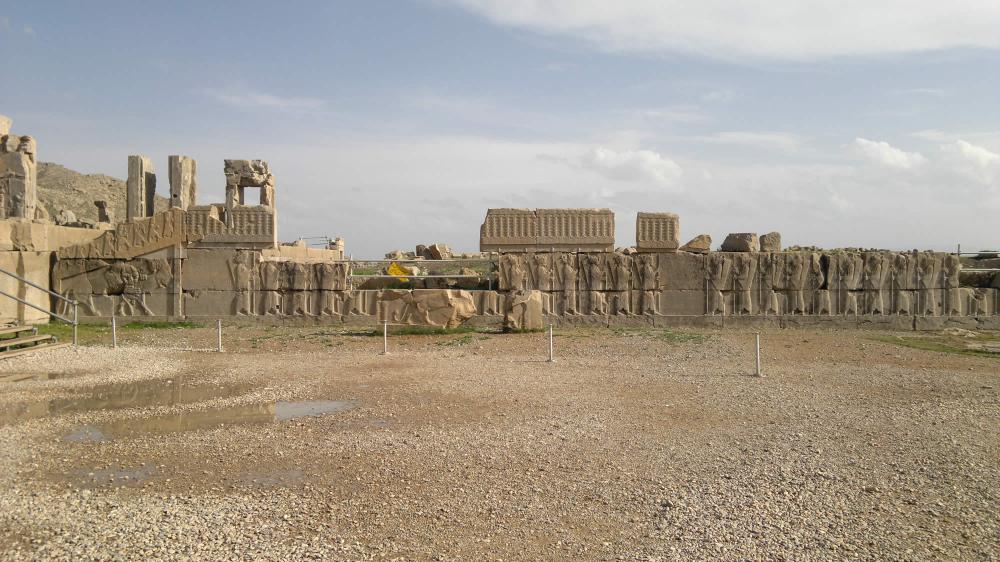During the surface water drainage operations in Persepolis, a main gutter was discovered at the southern courtyard of Tachar Palace, IRNA quoted supervisor of the Persepolis World Heritage Center Masud Rezaee-Monfared as saying.
The site
Founded by Darius I in 518 B.C., Persepolis in Iran’s southern Fars Province, was the capital of the Achaemenid Empire. It was built on an immense half-artificial, half-natural terrace, where the king of kings created an impressive palace complex inspired by Mesopotamian models. The importance and quality of the monumental ruins make it a unique archaeological site.
Findings
The discovery took place along with other findings on the drainage network of Persepolis, leading to an understanding of the water system design. The results of previous explorations indicated a water drainage duct, but no excavation was conducted.
During the restorative operations on the underground water channels of Persepolis conducted between 2003 – 2005, some conduits 280 meters long were discovered, dredged and restored.
In 2012, over 90 meters of the channels were further explored. Finally, with the recent discovery of the gutter and related conduits in Tachar Palace and the treasury of Persepolis, the chronic problem of Persepolis surface water drainage was resolved, and the waters are thus directed down to the conduits under the terrace where Persepolis lies.
The runoff and sewer network of Persepolis are among the most complex in the ancient world. Persepolis is constructed on the foot of Mount Rahmat, with an elevated terrace that is partially manmade.
Persepolis is in essence an important cultural center often visited during early spring around Nowruz festival. It enjoys great precipitation and water runoffs from the molten ice and snow. The sewer network assumes importance at this critical time as it was meant to both handle the water flow downward from higher areas as well as manage the sewage runoffs.
Techniques
In order to prevent flooding, the Achaemenids used two engineering techniques to divert molten snow and mountain runoff. The first was to collect the runoff in a reservoir that was a well with a square opening in dimensions of 4.2 by 4.2 meters, and a depth of 60 meters, allowing a volume of 554 cubic meters, or 554,000 liters of runoff to be collected. The water was diverted toward the reservoir via multiple masonry gutters strategically located around the structure.
The second technique was to divert water from the structure, should the reservoirs be filled to capacity; this system used a 180 m long conduit, with 7 m width, and 2.6 m depth located just west of the site.
The water system however was far more complex than just the reservoirs and the water conduits and involved a very sophisticated ancient system of closed pipes and irrigation. The irrigation was divided into five zones, two serving the northern part of the structure and three, the southern part.


